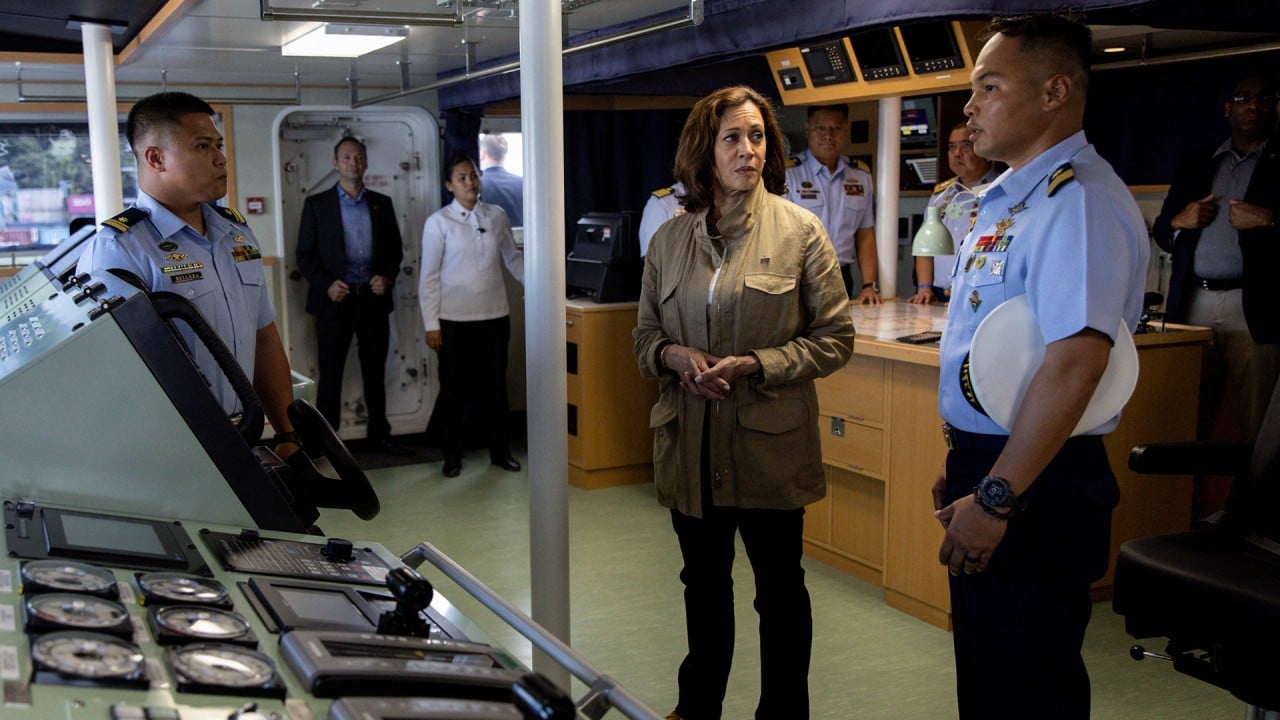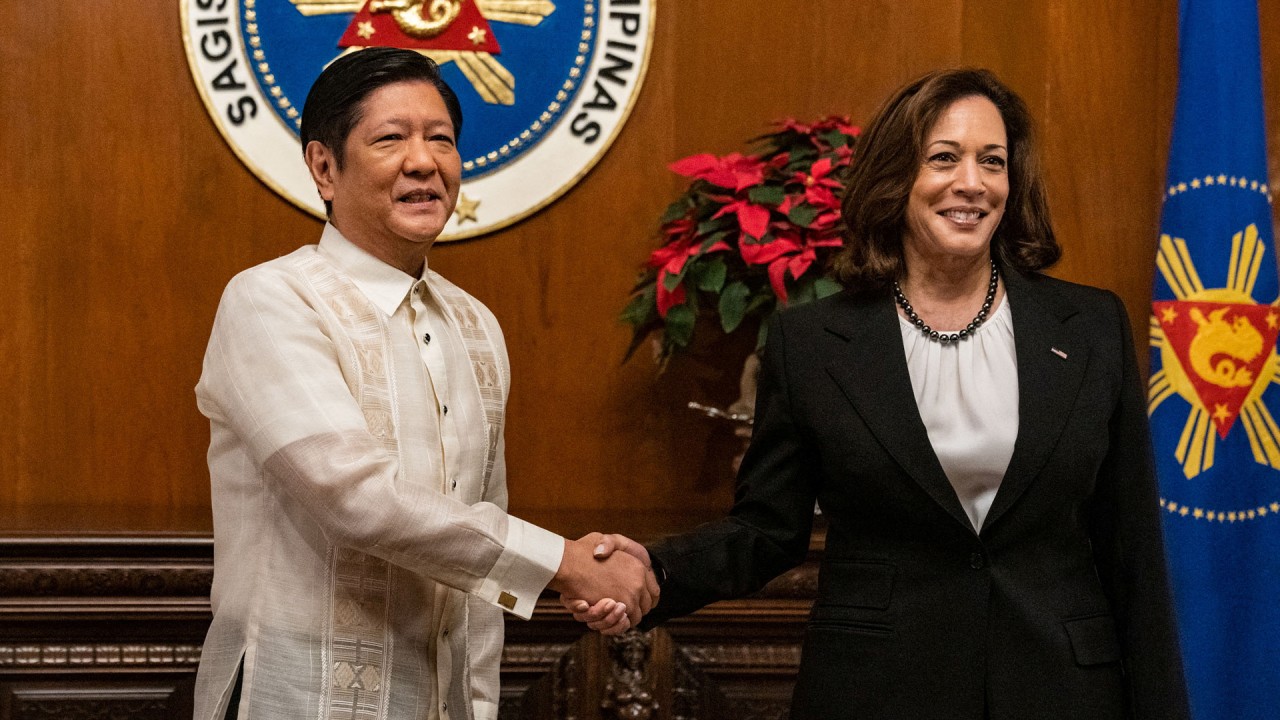
US Philippine bases spark protests as Kamala Harris visits Manila
- Demonstrators say they are worried that they are worried Washington will use the country as a ‘springboard’ to attack China
- Washington has pledged to defend its ally, which has a long-running territorial dispute in the South China Sea
“We don’t want our country to be used as a springboard or launching pad for the wars of the US against China or any other country,” said Liza Maza, secretary general of the International League of People’s Struggle, an anti-imperialist group.
“We are also against the warmongering of the US for the sake of asserting its hegemony in this part of the world … We want a peaceful Philippines and a peaceful region.”
“Stop funding state terrorism in the Philippines”, “stop US military aid to the Philippines” and “US Imperialism #1 Terrorist” were among slogans displayed by the demonstrators, who also included the League of Filipino Students, a left-wing youth organisation.
Harris secured five new military facilities in the Southeast Asian country, where Washington will invest a further US$66.5 million to expand its military presence, resuming the Enhanced Defence Cooperation Agreement (EDCA) – signed in 2014 but put on pause by former president Rodrigo Duterte, at times a fierce critic of the US.
Philippines calls on China to explain mismatched reports of rocket seizure
Harris said Washington supports Manilla in defence of international rules and norms, and vowed that “an attack on the Philippine armed forces, public vessels or aircraft in the South China Sea would invoke the US mutual defence commitment”.
Jan Robert Go, assistant professor of political theory at the University of the Philippines Diliman, said Marcos had taken a firm stance on the South China Sea, but was keen to reap the benefits of trading with China, which would improve his standing domestically.
“Especially since the Philippines is facing difficult economic challenges, on top of his campaign promises to lower commodity prices, anything that would improve the economy, reduce the effects of inflation, and temper social sentiments would be a good step for his administration,” Go said.
The US Indo-Pacific strategy, initiated under Donald Trump and continued by Joe Biden seeks a stronger strategic and economic presence in Southeast Asia to counter China’s expanding influence.
Except for the most vocal civil groups, the Filipino community is “neither supportive nor against” engagements with Washington, Go said.
“But caring less about the possible implications of Washington’s moves in the region does not preclude Filipinos from being bothered by the aggressiveness of the US in the region, which is seen as a competition with an equally aggressive China.”
Speaking before representatives of various Filipino women’s groups, Harris called for women to “participate in economic activities and engage in civil society.”
Xi and Marcos look to expand China-Philippines ties after first meeting
The ILPS, however, accused US economic policies of having “worsened inequality and poverty”, and urged the Philippines to limit the presence of US troops, facilities and military exercises.
“Like in the past, it is expected that with the presence of US troops, women and children and the LGBTQI community will become more vulnerable to crimes and violence committed by US soldiers,” a statement from the activist group read.
Go said opposition groups like the ILPS are viewed negatively by some Filipinos, due to former president Rodrigo Duterte’s “hasty labelling” of protesters as “rebels” and “communists”.
“The view is that instead of forging unity, these groups sow divisions within the country – exactly what the government wanted people to think,” Go said. “However, among the middle class and the limited critical mass, there is resonance with the positions these groups take.”
US politicians’ visits to Asia have typically prompted both ceremony and controversy.
South Korean civic groups, including the Korean Confederation of Trade Unions, staged protests when Harris met President Yoon Suk Yeol in September.
50 years after Okinawa’s return to Japan from US, locals have no appetite to celebrate
The island currently houses more than half of the 55,000 American troops in Japan.
A poll by Kyodo News, which surveyed 1,500 Okinawans in April, found that 84 per cent believe the island bears a disproportionate share of the US military burden, while 51 per cent said they do not trust the US military.



